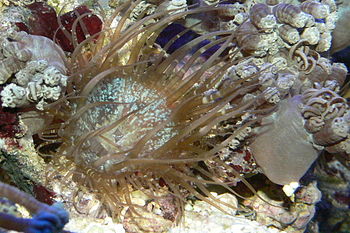 |
| (Photo credit: Wikipedia) |
I have in the past been an owner of several varieties of the above-mentioned breeds and can say that the most aggressive was the Giant Snakehead. On top of being strong, hardy and highly aggressive, the Giant Snakehead fish is an eating machine. If you do not believe this, then the (unjust) nationwide ban across the USA done for fear of the Giant Snakeheads potential environmental damage should be enough. With that said it is important to remember that even a naturally aggressive still need some intervention by their owners to bring out their true potential.
We are going to look at the approach I have used in the past to raise the aggression levels in my Giant Snakehead from its youth to adulthood. The basic idea behind my approach is live food as early on in life as possible, with live food as the Giant Snakeheads primary food source. There have been many arguments against the use of live feeder fish due to health concerns, but I can honestly say that it is all my Giant Snakeheads have ever eaten and I each have lived very long happy lives.
In their infancy stages, I do not recommend live feed as the Giant Snakehead will not be fast enough, nor big enough to catch and eat his prey. Bloodworms and bits of Nightcrawlers are both solid choices until your Giant Snakehead reaches about 4 to 6 inches long. Follow that I would slowly introduce him to live feed. Give him a single feeder fish at a time and watch to see if he begins actively hunting it. If he does not eat it, remove it from the tank and try again later. If he does eat his first I would suggest one live fish a day for a week, while he learns to become a more effective hunter.
After the first week, you can begin to give your Giant Snakehead two to three live fish a day for the next several weeks, while slowly weaning him off his non-living feed. As he gets larger you will want to increase his feedings. Once every two weeks, I would gorge him in a large amount of live feeder fish, giving him three to four times his usual daily allowance. Doing this will not only help his growth but also increase his aggression as your Snakehead will go into something of a feeding frenzy.
If all goes well in two years time your Giant Snakehead should be reaching nearly two feet in length and you can begin considering feeding him live rodents and frogs on the extremely rare occasion. I say this because in my research I have found it can make your Giant Snakehead very stressed as it will be a very foreign food object entering his tank. On the several occasions that I fed him rodents, he becomes violent and erratic in his tank.
On a final note, you should exercise caution when taking this approach at raising your Giant Snakehead. In his later years, the Giant Snakehead will get very large, very strong and lightning fast. An adult Giant Snakehead could easily leave with you a very nasty bite and could possibly remove meat.
|






